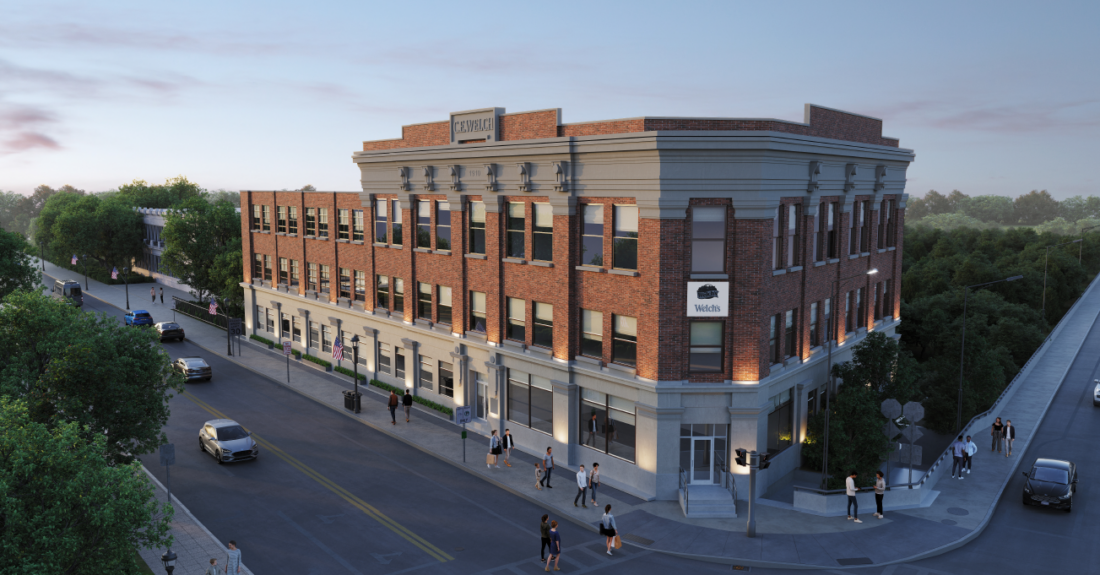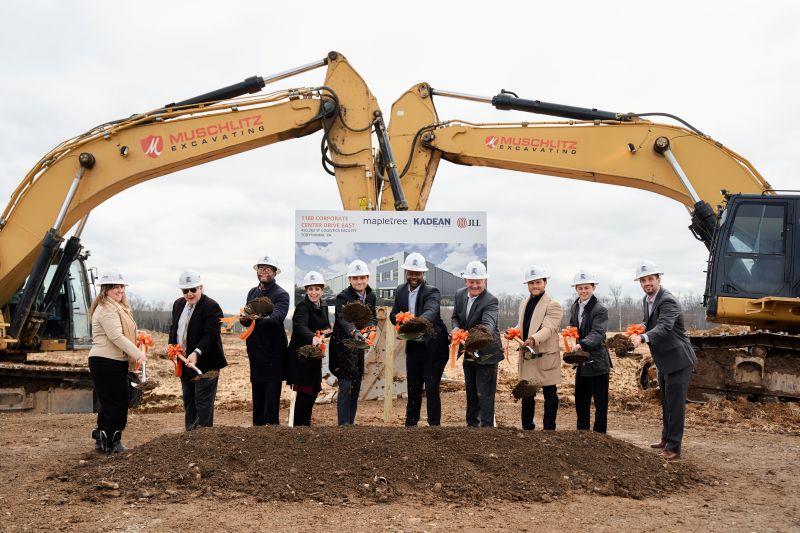County Lands $1M For Housing, Infrastructure Projects In Dunkirk, Westfield – Post Journal

Chautauqua County Secures $1 Million Grant for Infrastructure Projects Aligned with Sustainable Development Goals
Introduction and Strategic Alignment with Global Goals
Chautauqua County has been awarded a $1 million grant via the New York State Empire State Development County Infrastructure Grant Program. This funding is designated for two key housing and infrastructure initiatives in Dunkirk and Westfield. The projects are strategically designed to advance several United Nations Sustainable Development Goals (SDGs), primarily focusing on creating sustainable communities, fostering economic growth, and building resilient infrastructure.
These initiatives represent a significant public-private partnership, aligning with SDG 17 (Partnerships for the Goals), by leveraging state resources to generate long-term community and economic benefits.
Project Allocations and Contributions to Sustainable Development
The grant funds are allocated to two distinct projects, each contributing to specific SDGs:
-
Homesteads at Dunkirk Landing Housing Development ($200,000)
This allocation will support essential infrastructure costs for the relocation of sewer systems for a new housing development by Regan Development. The project will result in 78 new housing units.
- SDG 6 (Clean Water and Sanitation): The primary use of funds directly improves sanitation infrastructure, a core target of this goal.
- SDG 11 (Sustainable Cities and Communities): By creating modern, high-quality housing, the project addresses the critical need for adequate and safe housing options, enhancing the sustainability of the Lake Erie waterfront community.
-
Welch’s Building Redevelopment, Westfield ($800,000)
This funding supports comprehensive infrastructure improvements for the redevelopment of the Welch’s Building by Samuel Savarino. Enhancements include electrical service upgrades, underground vault seal-offs, sidewalks, landscaping, and lighting to facilitate the creation of 46 new housing units.
- SDG 9 (Industry, Innovation, and Infrastructure): The project focuses on upgrading critical electrical and public infrastructure, which is fundamental to building resilient and sustainable systems.
- SDG 11 (Sustainable Cities and Communities): The redevelopment revitalizes Westfield’s downtown district, converting an existing structure into essential housing and improving public spaces, thereby making the community more inclusive, safe, and sustainable.
Broader Impacts on County-Level Economic and Social Sustainability
According to County Executive PJ Wendel, these investments are crucial for maintaining Chautauqua County’s competitiveness and livability. The projects directly support SDG 8 (Decent Work and Economic Growth) by creating local jobs and fostering economic development through construction and revitalization.
Mark Geise, Deputy County Executive for Economic Development, noted the direct link between housing availability and economic prosperity. He stated that a lack of modern housing stock is a significant barrier to attracting talent for hundreds of open job positions in the county. This highlights the project’s role in creating the necessary social infrastructure to support a robust and growing economy, a key tenet of both SDG 8 and SDG 1 (No Poverty).
Governance and Implementation
The Chautauqua County Department of Planning and Development is tasked with overseeing the grant’s implementation. This ensures effective and timely use of funds in coordination with project partners, maintaining accountability and progress toward the stated sustainable development objectives.
Sustainable Development Goals (SDGs) Addressed in the Article
The article discusses issues and initiatives that are directly connected to several Sustainable Development Goals. The primary focus on housing, infrastructure development, economic growth, and public-private partnerships aligns with the following SDGs:
-
SDG 11: Sustainable Cities and Communities
This goal is central to the article, which details projects aimed at creating new housing and improving community infrastructure. The text explicitly mentions the creation of “78 new housing units” in Dunkirk and “46 new housing units” in Westfield to address a “critical need for modern, high-quality housing options” and “revitalize downtowns.” These efforts contribute directly to making cities and human settlements inclusive, safe, resilient, and sustainable.
-
SDG 9: Industry, Innovation and Infrastructure
The grant funding is specifically allocated for infrastructure development. The article states that $200,000 will “relocate sewer infrastructure” and $800,000 will support “electrical service upgrades, underground vault seal-offs, sidewalks, landscaping, and lighting improvements.” This focus on building resilient and sustainable infrastructure to support economic development and human well-being is a core component of SDG 9.
-
SDG 8: Decent Work and Economic Growth
The projects are framed as drivers of economic growth. The article notes that the initiatives are “designed to… support economic growth across the county.” It further explains that a lack of modern housing makes it “challenging” to attract talent to fill “hundreds, if not thousands, of open job positions.” By improving housing and infrastructure, the county aims to support local jobs and make the region more competitive, which aligns with promoting sustained, inclusive, and sustainable economic growth.
-
SDG 17: Partnerships for the Goals
The article highlights the collaborative nature of these projects. It explicitly states that they “represent significant partnerships between the public and private sectors, leveraging state resources to spur long-term community and economic benefits.” The involvement of New York State (Empire State Development), Chautauqua County, and private developers (Regan Development, Samuel Savarino) exemplifies the multi-stakeholder partnerships essential for achieving the SDGs.
Specific Targets Identified
Based on the article’s content, the following specific SDG targets can be identified:
-
Target 11.1: Ensure access for all to adequate, safe and affordable housing and basic services.
The article directly addresses this target by detailing the creation of 124 new housing units (78 in Dunkirk and 46 in Westfield). The project in Dunkirk is described as helping to “address a critical need for modern, high-quality housing options,” which directly relates to ensuring access to adequate housing.
-
Target 9.1: Develop quality, reliable, sustainable and resilient infrastructure… to support economic development and human well-being.
The allocation of the $1 million grant is entirely for infrastructure. The funds support the relocation of “sewer infrastructure” and facilitate “electrical service upgrades, … sidewalks, … and lighting improvements.” These are foundational infrastructure projects designed to support the new housing developments and enhance the community, thereby supporting both economic development and human well-being.
-
Target 8.5: By 2030, achieve full and productive employment and decent work for all.
The article implies a connection to this target by stating that the lack of housing is a barrier to filling “hundreds, if not thousands, of open job positions.” By creating housing, the county aims to “attract talent to fill these jobs,” which is a step toward achieving fuller employment and supporting local economic development and “local jobs.”
-
Target 17.17: Encourage and promote effective public, public-private and civil society partnerships.
This target is explicitly demonstrated in the article. The text describes the projects as “significant partnerships between the public and private sectors” and mentions the collaboration between New York State, Chautauqua County, the Chautauqua County Department of Planning and Development, and private developers. This model of leveraging state resources with private implementation is a clear example of a public-private partnership.
Indicators for Measuring Progress
The article mentions or implies several quantitative and qualitative indicators that can be used to measure progress towards the identified targets:
-
Indicator for Target 11.1:
The most direct indicator is the number of new housing units created. The article provides specific figures: 78 units in Dunkirk and 46 in Westfield, for a total of 124 new units.
-
Indicator for Target 9.1:
A key indicator is the total financial investment in infrastructure development. The article specifies the amounts: “$200,000 will support infrastructure costs to relocate sewer infrastructure” and “$800,000 will support infrastructure improvements for the Welch’s Building,” totaling a $1 million investment from the state grant.
-
Indicator for Target 8.5:
An implied indicator is the number of open job positions filled in the county. The article establishes a baseline problem of “hundreds, if not thousands, of open job positions.” Progress could be measured by tracking the reduction in this number over time as the new housing becomes available and attracts new residents.
-
Indicator for Target 17.17:
An indicator for this target is the amount of public funding mobilized to leverage private investment. The article clearly states that a “$1 million grant” from New York State is being used to facilitate projects implemented by private developers, demonstrating the financial aspect of the public-private partnership.
Summary of Findings
| SDGs | Targets | Indicators |
|---|---|---|
| SDG 11: Sustainable Cities and Communities | Target 11.1: Ensure access for all to adequate, safe and affordable housing and basic services. | Number of new housing units created (124 total: 78 in Dunkirk, 46 in Westfield). |
| SDG 9: Industry, Innovation and Infrastructure | Target 9.1: Develop quality, reliable, sustainable and resilient infrastructure to support economic development and human well-being. | Total financial investment in infrastructure from the grant ($1 million for sewer, electrical, sidewalks, etc.). |
| SDG 8: Decent Work and Economic Growth | Target 8.5: Achieve full and productive employment and decent work for all. | Number of open job positions in the county (baseline of “hundreds, if not thousands”). Progress is measured by the ability to attract talent to fill these jobs. |
| SDG 17: Partnerships for the Goals | Target 17.17: Encourage and promote effective public, public-private and civil society partnerships. | Amount of public funding mobilized to support private sector projects ($1 million grant from New York State). |
Source: post-journal.com
What is Your Reaction?
 Like
0
Like
0
 Dislike
0
Dislike
0
 Love
0
Love
0
 Funny
0
Funny
0
 Angry
0
Angry
0
 Sad
0
Sad
0
 Wow
0
Wow
0



















































.jpg.webp?itok=0ZsAnae9#)


























